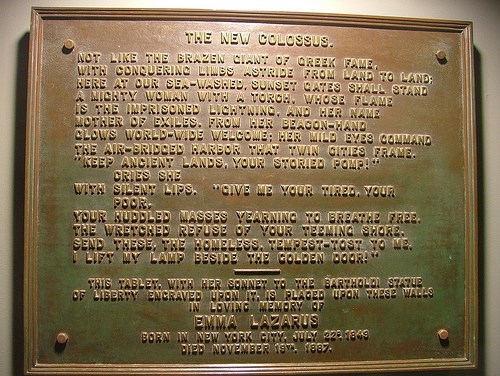Being a writer means never knowing what you might be remembered for. Or how badly.
That poem that Emma Lazarus became famous for was forgotten, remembered again, and has been misused, quoted out of context and transformed into a battle cry for open borders and a disastrous immigration policy. Its lines about “wretched refuse” and “poor” immigrants have been taken literally.
And yet the vocal advocates for the poem imprinted on the Statue of Liberty would have loathed the Confederate socialite and the Zionist writer who are responsible for the words they claim to love.
At the age of 34, Emma, a New York poetess with a bad case of writer’s block, was asked to submit a poem for a fundraiser to build a pedestal for a statue that most people hadn’t seen yet.
That included Emma.
Her first response was to turn down the request. Though she didn’t know it yet, her life was nearing its end. Five years after she wrote what would become her most famous poem, she would be dead.
But the request came from Constance Cary Harrison, a New York socialite, whose family story was a tapestry of American history, from John Randolph to Thomas Jefferson to Jefferson Davis. Her father was descended from Jefferson, her great-uncle's godparents had been George and Martha Washington, her grandfather had been the 9th Lord Fairfax and she had sewn one of the first Confederate flags.
Mark Twain had mockingly replied to her request with, “What has liberty done for us? Nothing in particular that I know of. What have we done for her? Everything. We’ve given her a home.”
Harrison was a prolific author, both in her days as a Confederate activist, writing as Refugitta, and a New York grande dame, and she didn’t accept rejections, either from Twain, or from Lazarus. As a teenager, she had lost her family home, her brothers, and her way of life. In many ways, she was also an exile.
And so, Harrison had encouraged Emma to think of the Jewish refugees she had been working with.
Twain’s sardonic comments had gotten at the problem with the Statue of Liberty. Its theme was Liberty Enlightening the World, but what did that mean? Did it mean that Americans were meant to export freedom to the world: a notion that would eventually drive American foreign policy in the 20th century?
That was the vision of some of the French activists involved with gifting the Statue of Liberty to America.Read the rest from Daniel Greenfield HERE.
If you like what you see, please "Like" us on Facebook either here or here. Please follow us on Twitter here.



No comments:
Post a Comment